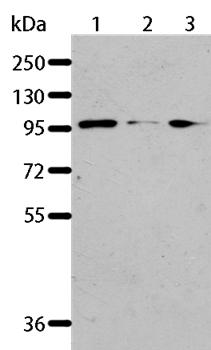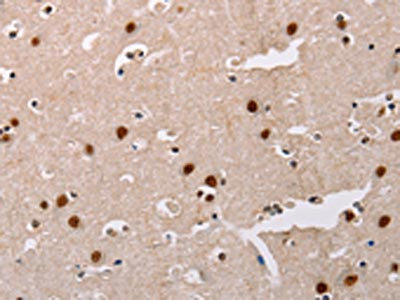AKAP8L antibody [N1N3]
GTX115831
ApplicationsImmunoPrecipitation, Western Blot, ELISA
Product group Antibodies
ReactivityHuman
TargetAKAP8L
Overview
- SupplierGeneTex
- Product NameAKAP8L antibody [N1N3]
- Delivery Days Customer9
- Application Supplier NoteWB: 1:1000-1:10000. *Optimal dilutions/concentrations should be determined by the researcher.Not tested in other applications.
- ApplicationsImmunoPrecipitation, Western Blot, ELISA
- CertificationResearch Use Only
- ClonalityPolyclonal
- Concentration1 mg/ml
- ConjugateUnconjugated
- Gene ID26993
- Target nameAKAP8L
- Target descriptionA-kinase anchoring protein 8 like
- Target synonymsHA95, HAP95, NAKAP, NAKAP95, A-kinase anchor protein 8-like, A kinase (PRKA) anchor protein 8-like, AKAP8-like protein, helicase A-binding protein 95 kDa, homologous to AKAP95 protein, neighbor of A-kinase anchoring protein 95, neighbor of AKAP95, testis tissue sperm-binding protein Li 90mP
- HostRabbit
- IsotypeIgG
- Protein IDQ9ULX6
- Protein NameA-kinase anchor protein 8-like
- Scientific DescriptionCould play a role in constitutive transport element (CTE)-mediated gene expression. Does not seem to be implicated in the binding of regulatory subunit II of PKA. May be involved in nuclear envelope breakdown and chromatin condensation. May regulate the initiation phase of DNA replication when associated with TMPO-beta.
- ReactivityHuman
- Storage Instruction-20°C or -80°C,2°C to 8°C
- UNSPSC12352203
References
- Zhang S, Wang H, Melick CH, et al. AKAP13 couples GPCR signaling to mTORC1 inhibition. PLoS Genet. 2021,17(10):e1009832. doi: 10.1371/journal.pgen.1009832Read this paper
- Melick CH, Meng D, Jewell JL. A-kinase anchoring protein 8L interacts with mTORC1 and promotes cell growth. J Biol Chem. 2020,295(23):8096-8105. doi: 10.1074/jbc.AC120.012595Read this paper
- Sundararaman B, Zhan L, Blue SM, et al. Resources for the Comprehensive Discovery of Functional RNA Elements. Mol Cell. 2016,61(6):903-13. doi: 10.1016/j.molcel.2016.02.012Read this paper
- Chen JY, Chou HC, Chen YH, et al. High glucose-induced proteome alterations in hepatocytes and its possible relevance to diabetic liver disease. J Nutr Biochem. 2013,24(11):1889-910. doi: 10.1016/j.jnutbio.2013.05.006Read this paper




